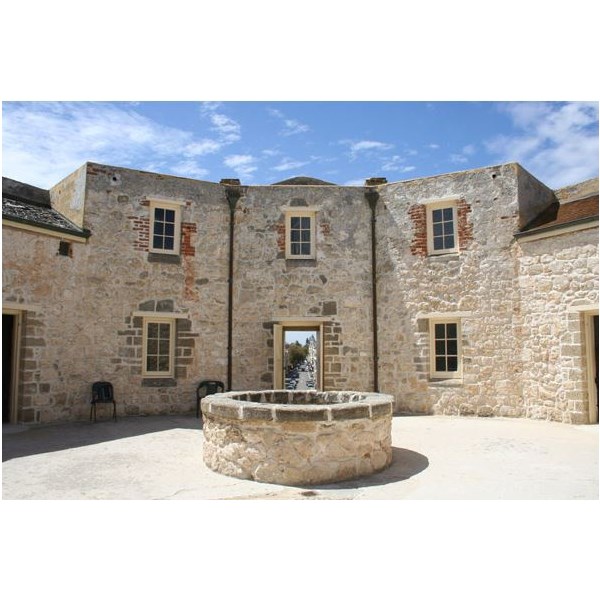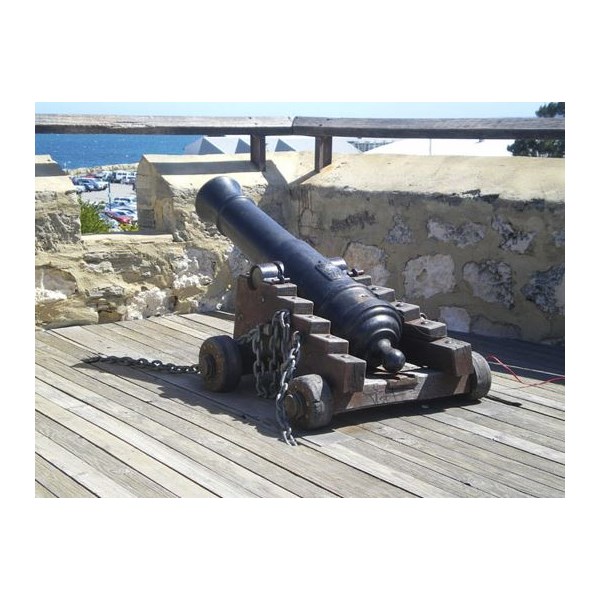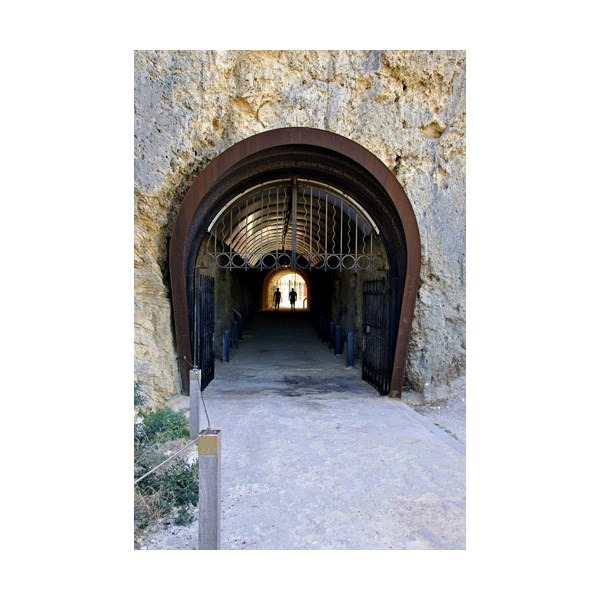The Round House was constructed in 1830-31, almost immediately upon
the settlement of the Swan River Colony, not so much to house local criminals, but unruly strangers to the port and the drunks amongst the less hopeful of arrivals The Round House was designed by Henry Willey Reveley, an architect and engineer, who had accepted the position of Civil Engineer to the Colony. Reveley was involved with the design of all of the early public buildings in the colony, including the Round House, Government Offices, Commissariat Stores, Courthouse and the first Government House. The building is twelve sided and self-contained. All rooms face an inner courtyard, which provides for light and ventilation, and was used as an exercise yard. The design was based on Bentham's panopticon, and thus embodied the latest design principles of incarcerative architecture at the time. However the built version was scaled down from the preliminary sketches. After some debate on the relative merits of the building of the
cliff or on the flats, the Arthur's head site was chosen and tenders were called, in July 1830. The choice of such a prominent site, terminating High Street, was symbolic of the role
It is called the Roundhouse because of the general shape of the building. It is a twelve-sided building and consisted of 8 cells and an ablutions area. "Dodecagon House" was too much of a mouthful!

The Round House, built in 1831

The Round House from the east.
Aside from the cells there are also a number of rooms incorporated into the Roundhouse. The front of the building is two story and is
the entrance way into the building. It also provided the guard's quarters. The
well was constructed in the centre of the building and a
bakery and laundry were incorporated under the front steps.
Only one person was ever hanged at the
Fremantle Roundhouse.
The Round House was the first permanent building built in the Swan River Colony. Built in late 1830 and opened in 1831, it is the oldest building still standing in Western Australia. It is located at Arthur Head in
Fremantle, and recent
heritage assessments and appraisals of the precinct of the Round House incorporate Arthur Head.
It was used for colonial and indigenous prisoners until 1886, when control of the Convict Establishment prison (now
Fremantle Prison) was transferred to the colony. After that the Round House was used as a police lockup until 1900, when it became the living quarters for the chief constable and his family. In 1936 it was vested in the
Fremantle Harbour Trust for preservation. A number of suggestions were put
forth, including turning it into a museum, but these plans were interrupted by World War II. In 1966 the Port Authority opened the building to the public for 2 hours per day. Later, this attraction was run by the Western Australian Historical Society. The building was then transferred to the City of
Fremantle in 1982 and has been open daily since then. It is operated by the
Fremantle Volunteer
Heritage Guides and is open from 10:30 am to 3:30 pm.
It was designed by Henry Willey Reveley; construction commenced in 1830 and was completed on 18 January 1831. Intended as a prison, it had eight cells and a jailer's residence, all of which opened onto a central courtyard. The design was based on the Panopticon, a kind of prison designed by philosopher Jeremy Bentham.
The Round House was built by Richard Lewis in partnership with W Manning and I Duffield for £1840/0/0. Worked commenced in August 1830 and was complete in January 1831 for the cost of £1603/10/0 this lower cost was due to the builders' being able to source the
limestone locally. In 1833 a
well was dug in the central compound. Reveley calculated that the depth of the
well needed to be 45 feet.

The Well

1 O'clock time Cannon
The
Fremantle Whaling Company in 1837 requested that a tunnel be dug through Arthur Head to High street. As part of the agreement they constructed a breakwater to protect shipping up to 150 tons. The
Fremantle whaling company paid for both the construction of the tunnel and the breakwater with Reverley overseeing both.
The tunnel was 57 metres long and linked the Bathers Beach
Whaling Station to the High Street. The tunnel was constructed in five months and completed in January 1838. This rapid progress was possible because prisoners from the Round House were used and
the rock, although load bearing and sound, was capable of being mined with a pick axe. Today the tunnel is only 45 metres long, as the cliffs were cut back some time after 1880.

The Whaler's Tunnel, dug beneath the Round House to join High St and Bather's Beach

Fremantle Whalers tunnel
The Round House had a
plaque placed by the Royal Western Australian Historical Society as part of commemorating historical sites in the Western Australia Centenary year of 1929.
.